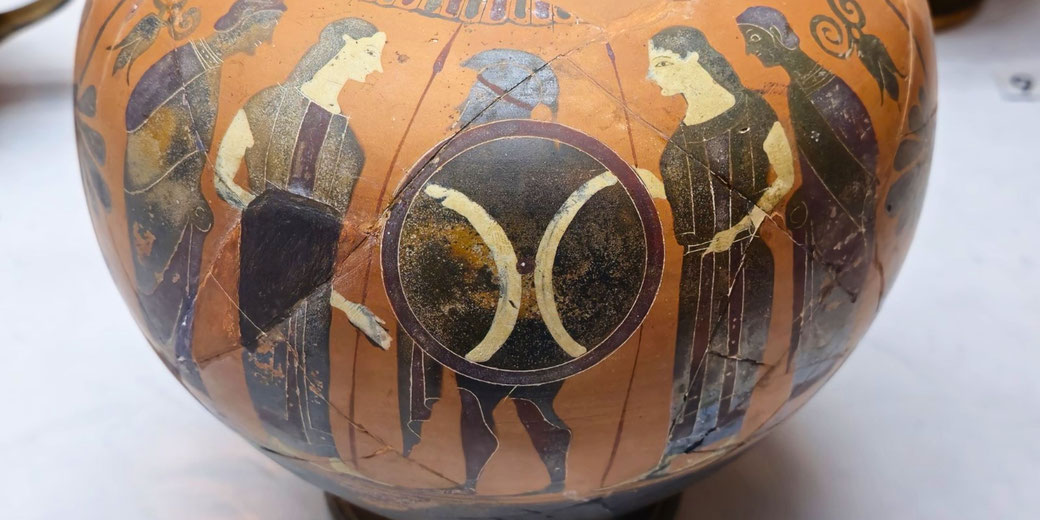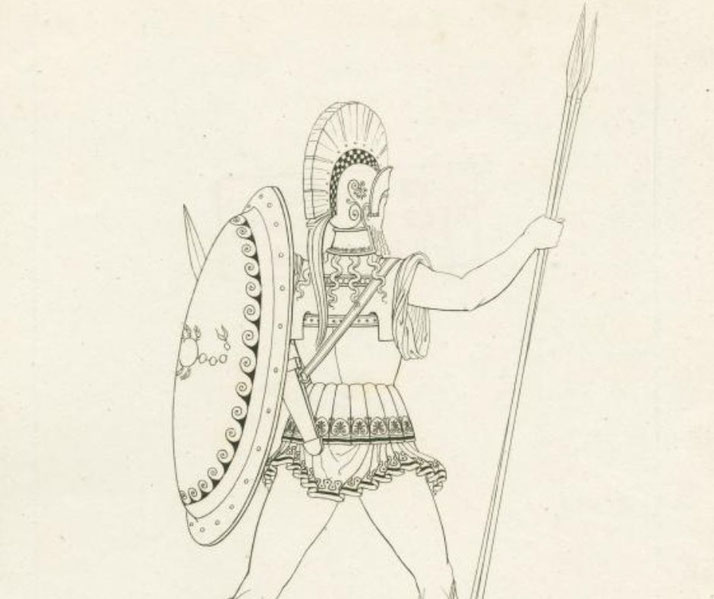One of the 300 Spartans survived the famous Battle of Thermopylae, but it haunted him forever

In 480 BCE, one Spartan is recorded to have returned from a battle where no Spartan should have survived.
Aristodemus was one of King Leonidas’ specially chosen warriors, selected because he had fathered a son to continue his line, and he left the pass of Thermopylae alive while the rest of the 300 had died fighting to the last man.
His name did not appear in victory odes or funeral inscriptions. Instead, his survival produced a steady stream of public criticism which continued over subsequent years in a city that trained its citizens to embrace death rather than dishonour.
The famous 'last stand' of the Spartans
At the height of Xerxes I’s invasion of mainland Greece, the Greek city-states were long divided by rivalry and agreed to unite under Spartan leadership to block the Persian advance.
They selected the narrow pass at Thermopylae, where high cliffs and the sea confined enemy movement, as the best place to make a stand.
The Spartan king Leonidas brought 300 of his finest warriors, who were traditionally chosen because they had fathered sons to preserve their household lines if they died.
Importantly, they were not alone. Several thousand allied hoplites joined the Spartan force, which included groups from Thespiae, Thebes and Corinth.
They formed a defensive line designed to stall the Persians while the Greek fleet fought off the coast at Artemisium.
As Persian infantry launched repeated direct attacks, the Greek phalanx held firm, as the narrow terrain prevented cavalry charges or outflanking, which forced the Persians to suffer heavy losses with little progress.
Estimates of Xerxes' force vary widely, with Herodotus claiming over two million, though modern historians generally place the number between 100,000 and 300,000.
Eventually, a man from Malis named Ephialtes is said to have betrayed the defenders when he guided Persian troops along a hidden mountain path that led behind the Greek lines.
Once Leonidas had received word that the defenders were being surrounded, he sent most of the allied groups away so they could regroup for later battles.
He chose to remain behind with his 300 Spartans, 700 Thespians, and a reluctant group of Thebans.
They had all known they were likely to die. The final stand took place between 7 and 11 August.
On the final day, the defenders fought in open ground. By that point, many had broken weapons and had resorted to using their hands and teeth in close combat.
Leonidas fell during the final engagement, and his men fought to recover his body, surrounded by enemy troops on all sides.
Persian archers ended the battle with a rain of arrows. None of the Spartan bodyguards remained alive on the battlefield.
Or so the traditional story goes. However, this was not actually the case.

Why did Aristodemus not die at Thermopylae?
Among the original 300, only two men named Aristodemus and Eurytus are recorded to have contracted a severe eye infection shortly before the final stand.
The symptoms likely indicated ophthalmia, a painful inflammation that caused temporary blindness.
Both men had been temporarily blinded, and Leonidas had reportedly ordered them to withdraw from the front line.
The order applied equally to each man, yet the two men responded in different ways to this order.
Soon after the king dismissed them, Eurytus learned that the final assault had begun, and he immediately asked his helot servant to guide him back to the battlefield.
Although unable to see, he put on his armour and charged back into the fight, where he died alongside his comrades.
Aristodemus, by contrast, had begun the return journey to Sparta. He had obeyed the king’s command, but he did not return to the battlefield when it mattered most.
Herodotus, who was the primary ancient source, described the event in Histories Book VII.229 but did not condemn Aristodemus outright.
However, the reaction of his fellow Spartans did not hold back their own feelings about the matter.
Since his return happened at the same time as the flood of praise for the dead, his survival seemed insulting to the memory of the fallen.
Many citizens believed that he had chosen comfort over duty, even though he had left under orders and remained physically unfit to fight.
At the same time, the memory of Thermopylae had already begun to form in monuments, poems, and public ceremony.
The dead had received what were considered the highest honours and as part of this, Leonidas’ name would live forever.
By contrast, Aristodemus had to walk the streets everyday in a city that treated him as a coward.
How the people of Sparta treated the lone survivor
Spartan law did not permit personal opinion to override public duty, as men who failed to uphold that duty suffered a series of shameful penalties.
Aristodemus quickly received the status of trembler (tresantes), a legal designation then given to those who showed fear in battle or survived under questionable circumstances.
Other Spartans who received this status faced similar treatment, including exclusion from the syssitia and the communal mess, and refusal of mourning by their own families.
From that moment, no Spartan would speak to him. He received no invitation to public meals or religious festivals.
His place in the phalanx stayed empty. Children likely mocked him, which was an acceptable form of punishment that were often aimed at men who carried the legal mark of cowardice.
Ultimately, he became an example that showed what happened to those who broke the unspoken code of martial honour.
Every part of his training had built habits of endurance and strict obedience that bound men to the community.
He had spent years living in the agoge, where boys were taught to suffer in silence and die without complaint.
Spartans viewed courage as a habit that had been reinforced from childhood, rather than as a simple emotion.
Since Aristodemus had failed to match the standard of those who fell at Thermopylae, his peers saw him as someone who had lost his right to belong.
Interestingly, he never protested and made no attempt to defend himself. He had accepted the sentence in silence and had not challenged the values that condemned him.
His shame, once set by law and public memory, remained unchanged until the next campaign.
Aristodemus' heroic act of redemption
In 479 BCE, as Persian forces under Mardonius prepared to strike again, the Spartan army joined a pan-Hellenic alliance led by Pausanias.
Aristodemus marched with them, as he believed he had nothing to gain except a chance to restore his reputation, and he knew that only by dying in battle could he do so.
At Plataea, the Spartans fought on the right flank, where the heaviest fighting occurred.
During the critical phase of the battle, Aristodemus rushed forward with fierce energy and killed enemy soldiers with such force and speed that fellow Spartans took notice.
He fought with disregard for standard battle formation or self-survival. Some called it heroism, while others saw only desperation.
Herodotus later wrote in Histories Book IX.71 that although his courage could not be denied, his lack of discipline identified him as an example of uncontrolled bravery, not the steady resolve that Sparta expected.
After the battle, he received no special honours even though he had fought with exceptional courage, mainly because the Spartas valued steadiness under pressure, not wild charges.
So, his death redeemed his name, but not his reputation for discipline.
Still, his story survived. Unlike the others who fell at Thermopylae, Aristodemus died twice, first in public honour and later in battle.
In later accounts, his name lives on for what he suffered rather than for his achievements.
In Sparta, glory came at the moment of death. For Aristodemus, it arrived only after a long and bitter silence.
What do you need help with?
Download ready-to-use digital learning resources
Copyright © History Skills 2014-2025.
Contact via email
With the exception of links to external sites, some historical sources and extracts from specific publications, all content on this website is copyrighted by History Skills. This content may not be copied, republished or redistributed without written permission from the website creator. Please use the Contact page to obtain relevant permission.





